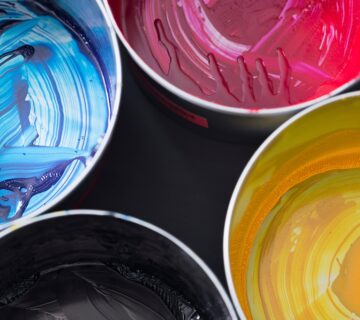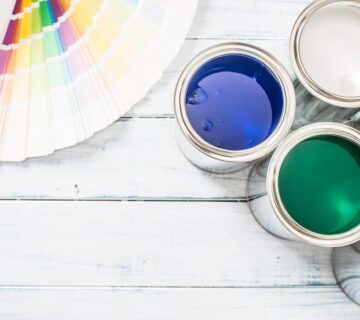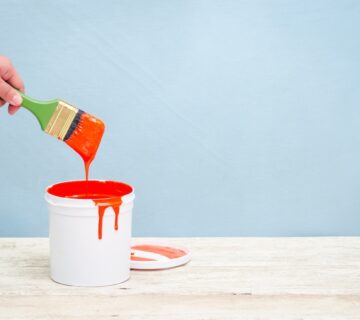When embarking on a house painting project, it’s crucial to budget not just for the obvious expenses like paint and labor, but also for the less apparent, often hidden costs. These hidden costs can catch homeowners by surprise, impacting the overall budget significantly. Understanding these potential extra expenses is key to planning a successful, cost-effective painting project. Identifying and accounting for these unforeseen expenses can prevent budget overruns and ensure the project progresses smoothly. This blog aims to uncover some of these hidden costs, helping you prepare a more accurate budget for your house painting venture.
Prep Work and Repairs
One of the most commonly overlooked costs in painting projects is the preparation work required before painting can even begin. This may include repairing cracks in walls, sanding rough surfaces, or dealing with water damage or mold issues. In older homes, removing outdated or lead-based paint can add to the cost. While some painters include basic prep work in their quotes, extensive repairs will likely incur additional charges. Recognizing the extent of required prep work beforehand can help you estimate a more realistic budget, ensuring that you are fully prepared for the costs associated with making your surfaces paint-ready.
High-Quality Paint and Materials
Opting for high-quality paint can have a significant impact on your budget. While it’s tempting to save money with cheaper options, quality paint provides better coverage, durability, and finish, which can be more cost-effective in the long run. Additionally, specialized paints, such as those with mold resistance or eco-friendly formulations, can further increase costs. The long-term benefits of choosing high-quality materials include fewer repaints and better resistance to wear and tear. Investing in the right materials can improve the longevity and appearance of your paint job, proving economical over time and ensuring that the finish remains vibrant and durable.
Complex Architectural Features
Homes with complex architectural features such as high ceilings, intricate trim work, or hard-to-reach areas can escalate the cost of a painting project. These features often require additional time, specialized equipment, and expertise to paint correctly, all of which can add to the overall expense. Such complexities may also extend the duration of the project, further increasing labor costs. Addressing these complexities early in the planning stage can help avoid unexpected costs later on. It’s crucial to assess the architectural challenges your home may present and discuss these with your painter to ensure all potential costs are accounted for in your budget.
Changing Colors
If you’re making a drastic color change, especially going from dark to light colors, it may require additional coats of primer and paint to achieve the desired look. This not only uses more material but also adds labor time, increasing the total cost. Covering a dark color with a lighter one often requires meticulous attention to detail to prevent the old color from bleeding through. Anticipating the need for multiple layers can guide you in setting aside an appropriate budget for paint and labor. Discussing your color choices with a professional can provide insights into the amount of paint needed and the number of coats required, allowing for a more accurate estimation of the project’s cost.
Protective Measures
Protecting your furniture, flooring, and fixtures during a painting project is essential. While some painters include the cost of drop cloths and plastic sheeting in their quotes, extensive protective measures for high-end furnishings or large areas may add to the overall expense. Ensuring that all areas are adequately protected from spills and splatters can prevent costly damage to valuable items. It’s wise to discuss these details with your contractor to ensure all necessary protections are included in the initial estimate. Being proactive about protective measures can save money and avoid the hassle of dealing with damages post-project.
Disposal and Cleanup
Post-painting cleanup and disposal of materials are sometimes overlooked in budget planning. Disposing of old paint, cleaning up spills, and removing tape and protective coverings can be time-consuming. Some painting services include cleanup in their quote, but others may charge extra for these services. Ensuring that the cleanup process is included in the initial budget or contract can prevent unexpected fees at the end of the project. Clarifying this before starting the project can prevent disagreements and unexpected charges, making the process smoother and more transparent.
Additional Finishes and Treatments
Special finishes like faux, stucco, or texturing can elevate the aesthetic appeal of your walls but come at an additional cost. These techniques require specialized skills and materials, which can significantly increase the price of your painting project. If you’re considering such finishes, it’s crucial to factor these into your budget early on. Discussing your desired finishes with your painter can help you understand the costs involved and the time required to achieve these effects. Preparing for these expenses in advance ensures that you can manage your budget effectively while achieving the desired look for your home.
Final Thoughts
Being aware of the hidden costs in house painting projects allows for more accurate budgeting and can prevent unexpected financial surprises. By considering factors like prep work, paint quality, architectural complexities, color changes, protective measures, cleanup, and special finishes, you can develop a comprehensive budget that encompasses all aspects of your painting project. This thorough planning ensures a smoother execution and helps you enjoy the fruits of your labor without undue stress over finances. Involving a professional early in the planning process can also provide valuable guidance and help ensure that no detail is overlooked. For more guidance on house painting and home improvement, visit our website at sisupainting.com and explore our blog at sisupainting.com/blog.





No comment